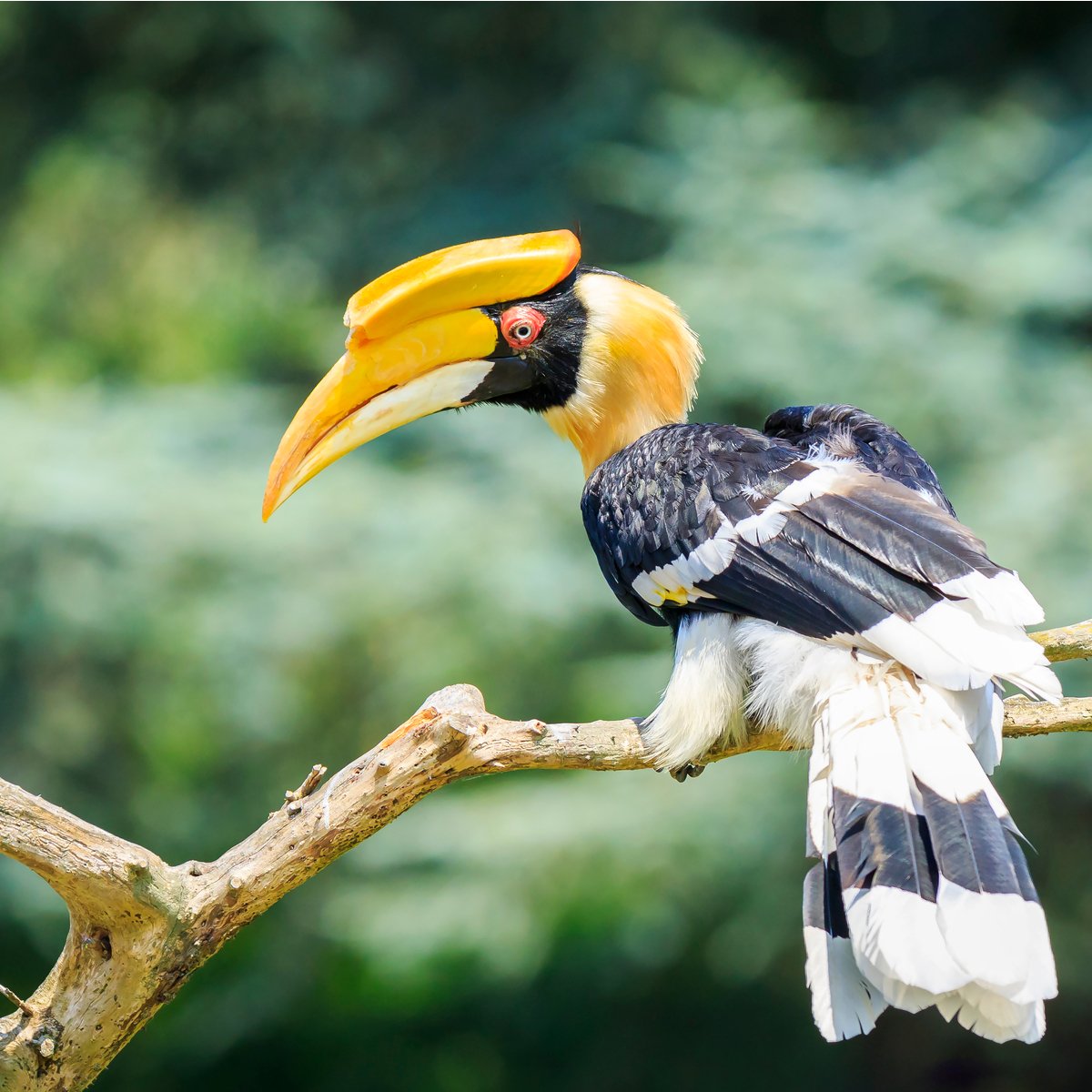The Covid-19 situation may have held us on ground level, but elsewhere in the sky…
A certain bird breed has been captivating the audience left and right.
Yes folks, I’m talking about the Hornbill…
A species that was once thought extinct on local shores, but has since expanded to become part of our local culture.
10 Facts About Hornbill, the Bird Breed That’s Getting Online Attention in S’pore Recently
1. What’s A Hornbill?
According to Wildlife Reserves Singapore, hornbills are an Old World group that is commonly found in sub-Saharan Africa and Asia.
They possess large, down-curved beaks which tend to be bright-coloured, and are monogamous breeders.

Apparently, the first two neck vertebrae of the creature are fused to support their heavy beaks – a structure that purportedly remains exclusive to the hornbill species.
They are notable for hunting in pairs or small groups, are also sometimes mistaken for their toucan counterparts.
2. Oriental Pied Hornbill
In Singapore’s case, the species of hornbills that’s prevalent here is known as the Oriental Pied Hornbill.
Incredibly, the majestic-looking species are reportedly native to Singapore.
Since 1994, they have been regularly spotted in the mangroves of Palau Ubin.
3. Shenanigans
Since their expansion, hornbills have been involved in a series of shenanigans here.
They have been documented stealing bras, eating chillies and even approaching humans for food.
A few have also been caught bothering smaller birds – a notion we shall explore in the next point.
4. They Are Omnivorous
Lest you’re unaware, hornbills are omnivorous creatures, just like your best friend Ah Hock and his girlfriend Ah Lian.
Advertisements
Although their primary diet consists of fruits, they are also known to consume insects and smaller birds.
On 15 November 2020, a large Oriental Pied Hornbill was captured “toying” with a smaller bird.
Apparently, the hornbill was “shaking the poor bird as it went”.
And just one day before, on 14 November, a hornbill was caught bothering the cage of a pet bird.
From the looks of it, it was attempting to pry the cage open with its beak.
Advertisements
It’s unclear, however, whether it was trying to get at the bird, or the fruit nestled within the cage.
Nevertheless, it should be noted that hornbills have devoured pet birds before.
Back in 2018, a hornbill was filmed “chomping” on a pet bird – later projected to be a Jambul Bird.
5. Once Thought Extinct
According to The Straits Times, the birds were once thought to be extinct here.
In fact, that perception lasted for over 100 years – during which zero sightings were reported.
It was only in 1994 that the species resurfaced, in the form of a pair of hornbills, and now, any sightings would become news.
Advertisements
6. Singapore Hornbill Project
Keen to ensure the continued survival of this striking species, the Singapore Hornbill Project was launched in 2004, to uncover how the species can be repopulated.
Nest boxes were also created for breeding pairs.
Following the success of the project, a new programme – which targets hornbill breeding – was conducted in 2008.
Since then, the species has experienced a relatively fast increase in population size.
7. Help With Forest Regeneration
According to Dr Lena Chan, group director of the National Biodiversity Centre of the National Parks Board (NParks), hornbills prove beneficial to the wildlife cycle.
Advertisements
This is because of their appetite for fruits – which leads them to disperse seeds.
However, in order for that to happen, locals have to abstain from feeding them.
“By not feeding them, we can ensure they continue to disperse seeds and help with forest regeneration,” she said.
8. Feeding Them
Locals are ill-advised to feed hornbills, as they may become reliant on humans for food resources.
This may also lead them to become aggressive if there’s no food.
For those worried about the scarcity of food supplies in the wild, Dr Chan has since stressed that there are enough food sources out there.
As such, people should refrain from feeding these animals, and instead adopt an observational stance from a distance.
Well, this is why the authorities have started investigating a case of a man feeding them in a hawker centre:
Advertisements
9. Tree Holes
All hornbills, save for ground hornbills, are known to nestle within tree holes.
According to Wildlife Reserves Singapore, they smear the entrance with mud and droppings until a narrow gap is left.
The female and chicks would then hide inside, where they rely on Papa Hornbill for food supplies.
10. Alliances
Several hornbills are reported to have alliances of sorts with other animal species.
For instance, some types of hornbills over in Africa share a mutualistic relationship with dwarf mongooses, acquiring food together and warning each other of nearby predators.
They also share commensal relationships with certain species: some would follow monkeys or other critters, and consume insects flushed up by them.
Bonus: Hornbill Hotel
This one’s a little out of context, but it still makes an interesting read.
Yes folks, there’s an actual Hornbill Hotel here in Singapore.
Though we would surmise that instead of being an intentional tribute to the species…
It’s more of a coincidence than anything else.
Still doesn’t take anything away from the majestic presence of hornbills though.
Featured Image: Wang LiQiang / Shutterstock.com
Read Also:
- You Can Soon See “Northern Lights” in Gardens by the Bay & It’s Free
- Everything About the Eta Aquarids Meteor Shower That’ll Be in S’pore Sky in May
- S’porean Killed in Spain Had Bought Insurance Policy from Suspect
- Everything About the 15YO Who Lived in a Circuit Road Market Stall
- Walk-Ins for Some Traffic-Related Service in TP Be Discontinued & People Have Book Appointments Instead
- Certain Parts of Telok Blangah Hill Park to be Closed for 2 Years After Slope Failure
Advertisements

